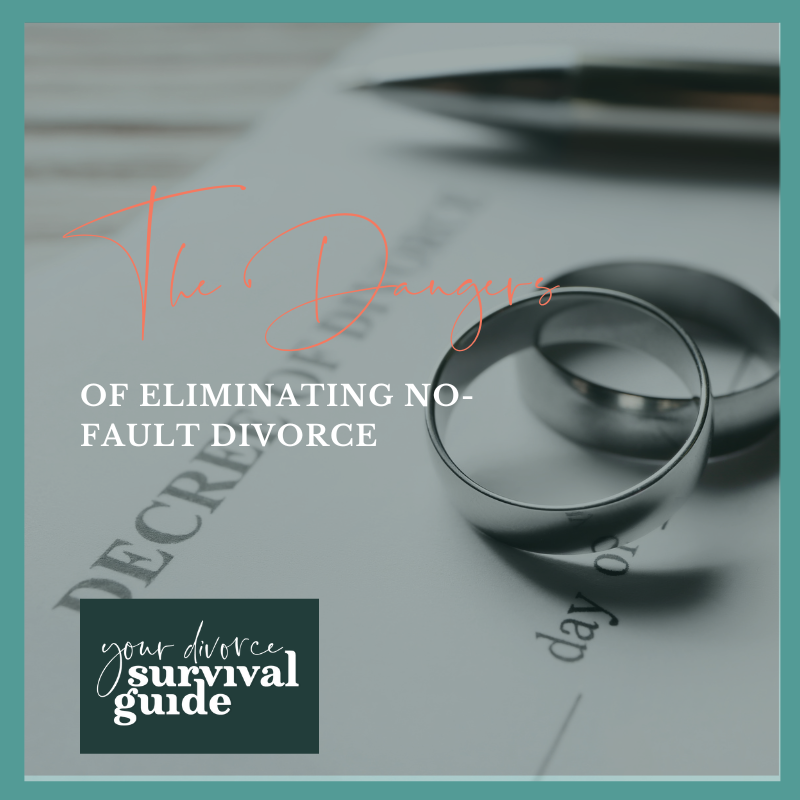August 12th, 2024
The Dangers of Eliminating No-Fault Divorce
Recent statements by prominent Republicans, including Republican Vice Presidential nominee J.D. Vance, have created a contentious debate about the future of no-fault divorce in the United States. Their push to eliminate this legal provision poses significant dangers, particularly to women, especially those trapped in abusive marriages. Understanding the implications of this proposed change is crucial in safeguarding women’s rights and well-being.
What is No-Fault Divorce?
No-fault divorce allows couples to dissolve their marriage without assigning blame or proving wrongdoing by either party. Introduced in the United States in the 1970s, this provision marked a significant step forward for women’s rights, providing an escape route from unhappy or abusive marriages without the need for legal battles and the stigma of fault-based divorce.
What J.D. Vance and Other Republicans Are Saying
J.D. Vance and other top Republicans argue that no-fault divorce undermines the sanctity of marriage and leads to the breakdown of family structures. They claim that making divorce easier has contributed to higher divorce rates and weakened familial bonds. J.D. Vance has gone so far as to say that women should stay in abusive marriages “for their kids.” However, this perspective overlooks the critical protections that no-fault divorce offers, particularly for women.
The Dangers of Eliminating No-Fault Divorce
- Increased Vulnerability to Abuse: Without the option of no-fault divorce, women in abusive relationships would face significant barriers to leaving their marriages. Proving fault in court requires substantial evidence, which is often difficult to gather in cases of domestic abuse. This could trap women in dangerous situations, unable to secure their freedom and safety.
- Economic Dependency: No-fault divorce has empowered women to leave unsatisfactory marriages without fear of financial ruin. Eliminating this provision could force many women to stay in harmful relationships due to economic dependency on their spouses. This is particularly concerning for stay-at-home mothers or women who sacrificed their careers for family responsibilities.
- Legal and Emotional Burdens: Fault-based divorces are often lengthy, expensive, and emotionally draining. Women seeking divorce would have to navigate a complex legal system, gather evidence, and endure potentially hostile courtroom confrontations, likely at their own expense. This could deter many from pursuing divorce, even in cases where it is clearly necessary for their well-being.
- Impact on Children: Children who grow up in high-conflict households or witness abuse suffer long-term psychological harm. No-fault divorce allows parents to separate amicably, reducing the trauma for children. The elimination of this provision could result in prolonged conflicts, exposing children to protracted periods of distress and instability.
- Erosion of Women’s Autonomy: Women’s rights and autonomy have been hard-fought achievements over the past century. The elimination of no-fault divorce would be a regressive step, undermining women’s ability to make decisions about their own lives and relationships. It would signify a societal shift towards restricting women’s freedom and reinforcing traditional gender roles, which is exactly the goal of the GOP.
The Importance of the Equal Rights Amendment (ERA)
Compounding the threat posed by the push to eliminate no-fault divorce is the fact that the United States has yet to ratify the Equal Rights Amendment (ERA). The ERA, first proposed in 1923 and passed by Congress in 1972, aims to guarantee equal rights under the law, regardless of sex. Despite widespread public support, the ERA has not been ratified, leaving women without a constitutional guarantee of equality.
This absence of constitutional protection means that women’s rights are vulnerable to political shifts and legislative changes. The push to eliminate no-fault divorce underscores the need for the ERA. Without it, women’s legal status remains precarious, subject to the whims of lawmakers who may not prioritize gender equality. The ERA would provide a robust legal foundation for protecting women’s rights, ensuring that advancements cannot be easily rolled back by initiatives like those proposed by Vance and his allies.
Conclusion
The campaign to eliminate no-fault divorce, championed by figures like J.D. Vance, poses a significant threat to women’s rights and safety. It’s crucial for advocates, policymakers, and the public to recognize and resist these efforts, primarily by voting in November. Women’s rights have come a long way, but they remain fragile in the face of regressive policies. Protecting and advancing these rights requires constant vigilance and collective action to ensure that all women can live with autonomy, safety, and dignity. The ratification of the ERA is an essential step in this ongoing struggle, providing a constitutional guarantee of equality that can safeguard women’s rights against future threats. Until the ERA is ratified, women’s only protection is through their votes.
If you’re considering divorce, filing before January 2025 might be your best move. If you need support, join us in Phoenix Rising, a divorce collective for women.

